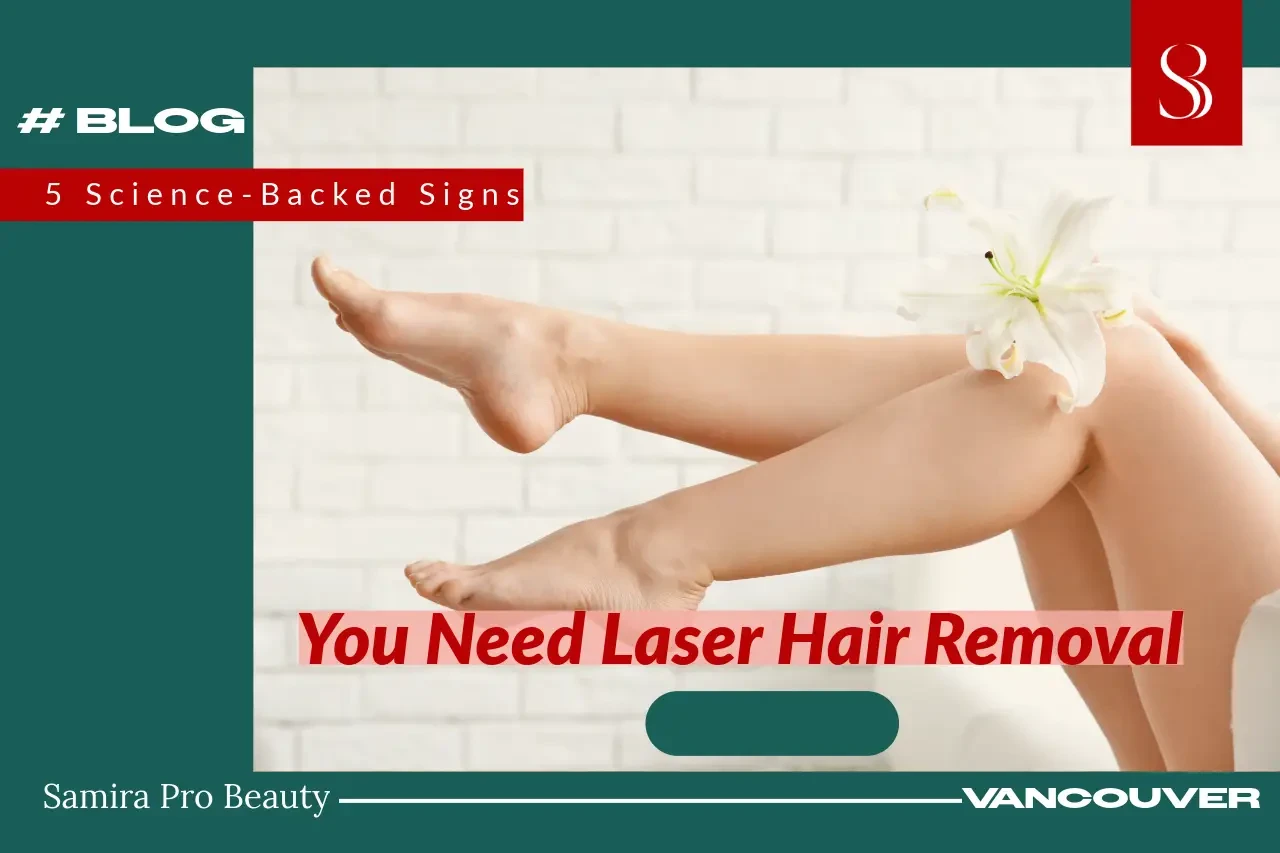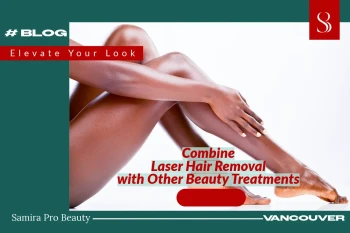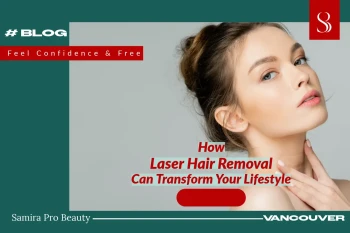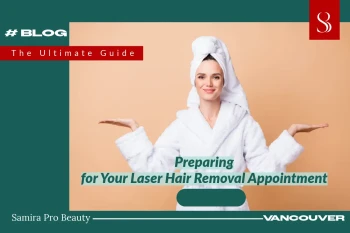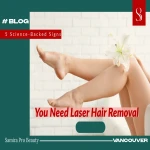5 Science-Backed Signs You Need Laser Hair Removal 🌟
Say Goodbye to the Razor
| 🎧 Prefer to listen? We’ve recorded a special podcast episode all about Top 5 Signs It’s Time for Laser Hair Removal. If you’re on the go, tune in here to get the highlights in audio form! |
A quick story you might recognize (and where to place it)
| Start your plan with Ladies Laser Hair Removal—smooth skin with a schedule that fits you |
Sign #2: Ingrown hairs or razor bumps are taking a toll 🔴
| Why laser hair removal is a game-changer for women. |
Your checklist:
| Soothe skin fast with our laser after-care steps |
Sign #3: Your skin is sensitive or reactive—and shaving/waxing makes it flare 🌿
If shaving creams sting, razors leave a rash, or waxing triggers breakouts and redness, laser can be the gentler long-term route. Why? The laser bypasses the skin surface to target the follicle beneath; there’s no scraping blade and no repeated pulling at the skin surface. Mild redness or swelling can occur post-treatment (similar to a light sunburn), but it typically settles within hours to a day with simple care.
| Build a gentle skincare ritual for calm, happy skin |
Your checklist:
| Add LED Therapy to calm redness and support healing |
Sign #4: You suspect hormonal or genetic drivers (e.g., PCOS, family traits) ⚖️
| Age-aware guidance: skin rejuvenation for women 40+ |
Your checklist:
| Reading for a partner? Explore Men’s Laser Hair Removal |
Sign #5: You want a steady confidence lift (and a cleaner canvas for skincare) ✨
| Real stories: how laser lifts daily confidence |
| Pair your smooth skin with Morpheus8 firming for a next-level glow |
How safe is it—and for whom? Inclusivity matters 🤝
Pre-care & after-care: your smooth-skin success plan 🧾
Save/Bookmark these:
Pre-care checklist: No tanning or self-tanners; protect skin daily with broad-spectrum SPF 30+; shave (don’t wax) before sessions; pause photosensitizing skincare on treatment areas.
After-care essentials: Cool compresses if needed; gentle cleanser and moisturizer; avoid heat, hot yoga, saunas, and tight clothing for 24–48 h; space sessions 4–6 weeks apart.
| Get ready with our laser pre-care guide (simple, effective) |
Where laser shines vs. traditional methods (quick compare) ⚖️
Shaving: Fast, affordable, but short-lived; can trigger bumps/irritation.- Waxing: Longer-lasting than shaving but can be painful, can still lead to ingrowns.
- Laser: Targets the source (follicle) for durable reduction, fewer ingrowns, and less daily friction. Multiple sessions required, but the long-term pay-off is real.
| Every answer in one place: After-care & post-treatment hub |
Best next steps 🚀
- Find your plan: [Ladies Laser Hair Removal] or [Men Laser Hair Removal]—areas, timelines, and pricing ranges.
- Get answers fast: Our [Laser Hair Removal FAQ] covers skin types, session counts, and what to expect on the day.
- Book with confidence: Schedule your consultation or first session from the service page you prefer.
- Share the glow: Ask our team about gift cards / seasonal promos to treat yourself or a bestie. (Perfect for birthdays, weddings, and “just because” moments!)
Smart add-ons & related reads (build your ritual) 📚
- Why We Trust Candela GentleMax Pro Plus for Laser Hair Removal – our technology choice and why it matters.
- The Science Behind Laser Hair Removal: How It Works & Why It’s So Effective – deeper dive into wavelengths and hair cycles.
- How to Combine Laser Hair Removal with Other Beauty Treatments – plan your 90-day glow-up.
- Quick Skincare Rituals for Busy Women – keep results with simple routines.
- Top 10 Benefits of Laser Hair Removal for Women – see all the perks in one place.
(Find these and more on our [Blog].)
FAQs (10 quick answers) 💬
1) How many sessions will I need?
Most clients need a series (often ~6 sessions) 4–6 weeks apart for lasting reduction; exact numbers vary by area and hair type.
2) Is it safe for my skin tone?
With today’s devices and settings (e.g., Nd: YAG for deeper tones), laser can be performed safely across many skin tones—provider expertise is essential.
3) Will laser help my ingrown hairs?
Yes. By reducing hair density and damaging the follicle, laser reduces ingrown and razor bumps over time; evidence supports laser for pseudofolliculitis.
4) Is it permanent?
Laser offers long-term reduction; some body areas can achieve near-permanent results after multiple treatments. Facial hair in women often needs maintenance.
5) Does it hurt?
Most describe a quick “snap” feeling plus cooling. Many find laser less painful than waxing. Mild redness may appear briefly after.
6) How should I prepare?
7) What’s after-care like?
8) Can I do this if I think I have PCOS?
Yes—laser can be part of a PCOS hair-management plan and has evidence for improving hirsutism; your clinician may also discuss medical options.
9) How soon will I see results?
You’ll notice shedding over days to weeks after each session. Meaningful reduction typically appears after 2–3 sessions, building across your series.
10) What areas can I treat?
Most body and facial areas—from underarms and bikini to legs, arms, and chin. We’ll advise a safe plan for your goals and skin type during consultation.
You deserve calm, confident skin that doesn’t run on a razor schedule. If any of these signs sound like you, we’d love to help you plan a safe, effective series—personalized to your hair, skin, and lifestyle.
Start here:
- [Ladies Laser Hair Removal] (areas, plans, and booking)
- [Men Laser Hair Removal] (for partners/friends)
- Questions? [Laser Hair Removal FAQ]
And if you’re gifting smooth confidence: ask our team about seasonal deals and gift cards—perfect for birthdays, bridal parties, or a self-care treat. 💝
References 🔬:
- Mayo Clinic — Laser hair removal: Overview & how it works.
- American Academy of Dermatology — FAQs & Preparation; modern inclusivity across skin tones.
- Cleveland Clinic — What to expect; typical series length & safety.
- JAMA Dermatology (2024) — Systematic review: laser/light therapies for hirsutism (PCOS).
- Archives of Dermatology — Laser for pseudofolliculitis (ingrowns).
- Healthline — After-care do’s and don’ts.
